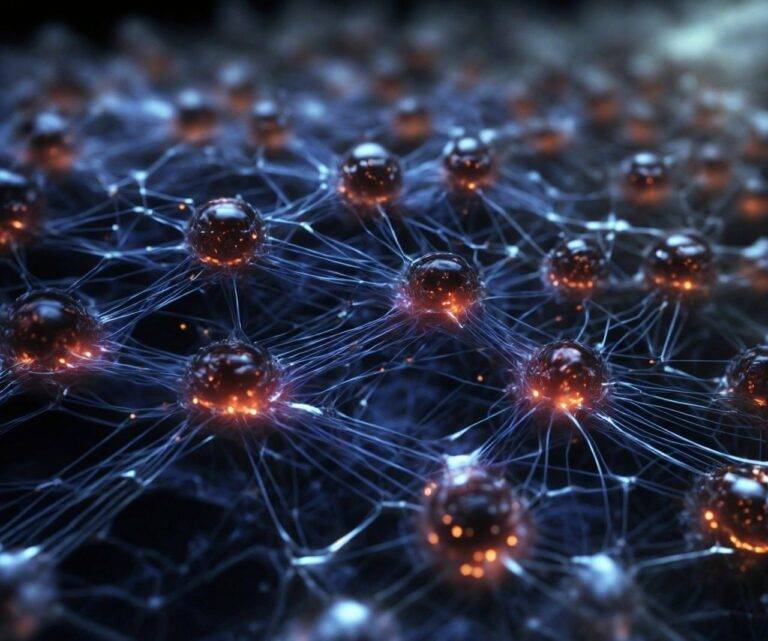Neuromorphic Computing: Mimicking the Human Brain in Technology
Neuromorphic computing is a cutting-edge field that seeks to mimic the intricate neural networks of the human brain in order to enhance computing capabilities. By emulating the brain’s structure and functionality, neuromorphic computing opens up a myriad of possibilities for creating more powerful and efficient systems. Instead of following the traditional von Neumann architecture, these new systems are designed to process information in a parallel, decentralized manner, similar to how the human brain operates.
The main advantage of neuromorphic computing lies in its ability to perform complex tasks rapidly and with minimal energy consumption. This makes it particularly well-suited for applications such as pattern recognition, machine learning, and real-time data processing. As researchers continue to push the boundaries of this exciting technology, the potential for innovation in fields like artificial intelligence and robotics is limitless.
The Principles Behind Neuromorphic Computing
Neuromorphic computing is a cutting-edge approach inspired by the human brain’s neural architecture. The key principle underlying this technology is to mimic the brain’s functioning by employing artificial neural networks. These networks consist of interconnected nodes, or artificial neurons, that exchange signals to process and store information. By leveraging this bio-inspired design, neuromorphic computing aims to enhance the efficiency and adaptability of conventional computing systems.
One crucial aspect of neuromorphic computing is the emphasis on parallel processing and distributed computing. Unlike traditional computing, which relies on sequential processing, neuromorphic systems enable multiple tasks to be executed simultaneously. This parallelism mirrors the brain’s ability to handle numerous operations in parallel, leading to faster computation speeds and improved performance in tasks such as pattern recognition and machine learning.
• Neuromorphic computing is inspired by the human brain’s neural architecture
• Artificial neural networks are employed to mimic the brain’s functioning
• Networks consist of interconnected nodes or artificial neurons exchanging signals
• The technology aims to enhance efficiency and adaptability of computing systems
One crucial aspect of neuromorphic computing is the emphasis on parallel processing and distributed computing.
– Unlike traditional computing, which relies on sequential processing, neuromorphic systems enable multiple tasks to be executed simultaneously.
– This parallelism mirrors the brain’s ability to handle numerous operations in parallel.
– Faster computation speeds and improved performance in tasks such as pattern recognition and machine learning are achieved through this approach.
Development of Neuromorphic Hardware
Neuromorphic hardware has seen significant advancements in recent years, with researchers focusing on designing chips that mimic the structure and functionality of the human brain. These neuromorphic chips are built upon the principles of spiking neural networks, which use spikes, or brief pulses of electrical activity, to communicate information. By leveraging these spiking neural networks, neuromorphic hardware can process data in a highly efficient manner, enabling tasks such as pattern recognition, associative memory, and complex decision-making.
One key aspect of the development of neuromorphic hardware is the quest for low power consumption and high-speed processing capabilities. Traditional von Neumann computers face limitations in these areas due to their sequential processing architecture. In contrast, neuromorphic hardware’s parallel processing nature allows for faster computation and reduced energy requirements. As researchers continue to refine the design and functionality of neuromorphic hardware, the potential applications span a wide range of fields, including artificial intelligence, robotics, and even brain-computer interfaces.
What is neuromorphic computing?
Neuromorphic computing is a branch of computer science that aims to mimic the structure and function of the human brain in order to create more efficient and powerful computing systems.
What are the principles behind neuromorphic computing?
The principles behind neuromorphic computing involve using artificial neural networks to process information in a way that is similar to the way the human brain processes information. This includes using spiking neural networks and neuromorphic hardware to mimic the behavior of neurons and synapses.
How is neuromorphic hardware developed?
Neuromorphic hardware is developed using a combination of traditional hardware design techniques and principles inspired by neuroscience. This involves designing specialized hardware that can efficiently simulate the behavior of neurons and synapses in order to process information in a more brain-like way.





